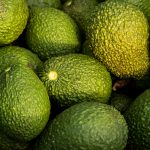
DRONES AND PRECISION LIVESTOCK FARMING
Introduction
Drones are one of the technologies that are currently booming in the world of aeronautics, which is why more and more products are becoming available on the market. A drone is an aircraft that flies unmanned and is operated by remote control. Different names are used to refer to them, including:
UAV (Unmanned Aerial Vehicle), i.e. unmanned aerial vehicle, a term for any device capable of unmanned flight, which may include a radio-controlled toy.
UAS (Unmanned Aerial System), i.e. the set of components itself.
Drone, a term to some extent synonymous with UAS, although more specific, since a drone is an unmanned aerial system, which is used for a specific function, i.e. it is a UAS to which is added, for example, a camera to be used for livestock farming, as will be explained below.
RPA (Remotely Piloted Aircraft), which is a more specific and detailed way of referring to UAVs. It refers to the fact that the aircraft is being piloted remotely by a natural person.
Multicopters, aircraft that have multiple rotors with the ability to take off vertically.
The basic parts of a drone are:
Motors, propellers and ESCs, are the key components to keep the drone in the air. The ESCs (Electronic Speed Control) regulate the electrical power that is supplied to the motors, i.e. the rotational speed of the rotor, which keeps the aircraft suspended in the air thanks to the propellers.
Flight controller, which could be considered the brain of the machine, as it controls all aspects of the machine. Virtually all of the electronics are connected to the flight controller.
Remote control or controller, the device through which the drone’s movements are instructed.
Radio receiver, which is the component that receives the orders from the remote control and then transmits them to the flight controller, so that the instruction can be executed by means of variations in the speed of the rotors, which are responsible for altering the course of the drone at the user’s will.
Batteries are responsible for providing the energy necessary for the drone to perform all its functions. They are generally made of lithium polymer, low weight and high discharge.
There are different classifications of drones, depending on different aspects, such as lift and number of arms. The main method of classification is based on the way in which they are sustained in the air, on the basis of which a distinction is made between fixed-wing drones and multi-rotor drones. Fixed-wing drones are those that require an initial flight speed in order to hover in the air, which means that they are not able to take off on their own and need a person or mechanism to launch them. Aesthetically, they are the closest thing to an aeroplane. Their aerodynamics mean that they have a long flight range, being able to fly for several hours, which is why they are the most suitable for covering large areas. In the case of the multi-rotor or rotary wing, lift is provided by the propellers incorporated at the ends of each of the arms. Each of these propellers is driven by an engine, which ensures high stability during flight. Unlike fixed-wing drones, these drones can remain hovering at a single point. They are the best-selling unmanned aircraft on the market. Depending on the number of drones, they are classified into tricopters, quadcopters, hexacopters, octopters and coaxial drones. Tricopters, as the name suggests, consist of three arms and three motors. The two front arms rotate in opposite directions, thus counteracting each other, and the third, located at the rear, works with a servomotor, providing stability during flight. Quadcopters, consisting of four arms and four motors, are the most common on the market and the most widely used. In turn, among professional drones, the most common are the hexacopters, due to their stability when taking aerial photographs and videos. Another of the most important characteristics of this type is their safety, as it is possible to land them even if they lose one of their motors during a flight. Since the more arms and motors a drone has, the greater its stability and power, octocopters are among the most powerful and stable drones, although because of this they tend to be much heavier and more difficult to handle, especially in small places. Finally, coaxials differ from all of the above with respect to the number of motors per arm, featuring two motors per arm, and are thus capable of supporting heavier weights. They are considered to be the best option for professional work.
When flying a drone, it is essential to consult the regulations of each country, which clearly reflect the places and altitude at which it can be flown, among other specifications. In addition, when carrying out a professional activity with professional drones, a pilot’s licence is compulsory, which means that a series of theoretical and practical knowledge must be accredited; you must be registered as an operator with the AESA (Spanish Aviation Safety Agency); have civil liability insurance; and have a valid medical certificate.
Cameras
In the field of precision livestock farming, in addition to the aircraft, cameras are required, which can measure an electromagnetic signal reflected or emitted by objects, and then convert it into a measurable physical magnitude, which can be processed and recorded. This procedure or technique by which information is acquired without having direct contact with the element to be analysed is called remote sensing, the purpose of which is to capture, process and analyse a series of digital images. Within remote sensing we can speak of passive remote sensing, which measures electromagnetic radiation, in response to the incidence of natural radiation (sunlight); and passive remote sensing, in which artificial radiation is used. The reflective component of the various objects is variable and is conditioned by external factors, such as environmental conditions, and internal factors, i.e. the physical and chemical characteristics of the moment when the image is being taken.
Electromagnetic energy is a type of energy transmitted through space by waves with a certain speed. An electromagnetic wave is the result of the simultaneous propagation in space of an electric field and a magnetic field, which are variable, given their form of propagation. The different types are defined by their wavelength (h) or frequency (F). The wavelength refers to the periodic character of this disturbance, being defined as the distance between two contiguous peaks of one of the fields and is therefore measured in units of length. Frequency is related to the number of cycles passing a fixed point, per unit time, which is measured in Hertz (Hz). Wavelength and frequency are the characteristics that allow a classification to be made between the different types of electromagnetic energy, the whole of which is called the electromagnetic spectrum, each of them receiving a particular denomination such as ultraviolet or infrared. It can be established that there is an inversely proportional relationship between wavelength and frequency, so that the higher the frequency, the shorter the wavelength and vice versa. The electromagnetic energy received by the earth’s surface undergoes different processes. Some of it can be reflected, while the rest penetrates the different elements of the surface through refracted waves, which in turn can be absorbed or transmitted, depending on the nature of the objects and the wavelength of the energy. The energy that is absorbed is subsequently returned in the form of energy emitted by the objects, although the emission occurs at other, generally longer wavelengths, depending on the temperature. Incident energy is therefore the sum of reflected, absorbed and transmitted energy. The proportions of these energies vary for each object, which makes it possible to discriminate between them through the application of remote sensing systems. Moreover, for the same object, these ratios vary at different wavelengths, so that objects may be indistinguishable in one portion of the spectrum and perfectly distinguishable in another.
In short, each object on the Earth’s surface emits electromagnetic energy with an intensity that depends on the temperature, which allows it to be used for identification, which is related to the emissivity, which corresponds to the proportion of emitted energy with respect to the incident energy or, in other words, to the proportion between the energy emitted by an object and that which a perfect emitter (black body) would emit at the same temperature. All this leads to the term spectral signature, which is the set of characteristic values specific to each object, captured for the different fields of the spectrum from which information is obtained. The same object can vary its spectral response depending on its state and relationship with the environment.
Thermal imaging cameras
The basis of the operation of thermographic or thermal cameras is based on the fact that all objects that are at a temperature higher than what is considered to be absolute 0, i.e. 0K (-273ºC), emit infrared radiation. The intensity of this infrared radiation increases as a function of the surface temperature of the body. This difference in temperature is not visible to the human eye, since its range in the electromagnetic spectrum is between visible light and microwave radiation, which is why sensors are needed to produce what is known as a thermogram or temperature pattern, which is sent to a processor, obtaining an image in which these variations are shown on a greyscale or colour scale.
In precision livestock farming, the use of this type of camera focuses fundamentally on the study of variations in the temperature of livestock, with the aim of early detection of the different pathologies that may develop, favouring diagnosis, avoiding complications and ensuring welfare; and in the location of animals, which in extensive livestock farming areas may get lost or in the search for cows that may be in labour to ensure the safety of the animal and its offspring, above all in those cases in which possible complications are suspected.
Multispectral cameras
As their name suggests, they are cameras capable of capturing a wide variety of light spectra, which means that they can collect images using different wave frequencies simultaneously, i.e. they are not limited only to the spectrum of visible light perceived by the human eye. From the multispectral images we obtain what are known as vegetation indices, defined as the parameter obtained as a result of the combination of two or more reflectance values at different wavelengths, with which a specific characteristic of a grass can be highlighted. The ideal index is one that is sensitive to plant cover, insensitive to ground brightness and colour and little affected by atmospheric disturbances, environmental factors and the geometries of illumination and observation.
These cameras are used in many instances, such as one of the latest projects we are carrying out, in which we have managed to measure the variability of pastures and alfalfa, in order to optimise the stocking rate by zones, thus avoiding excessive degradation of the environment and guaranteeing that in subsequent years feed will be available for the animals in the same places. A digital inventory is also available which can be used to improve livestock management processes.







